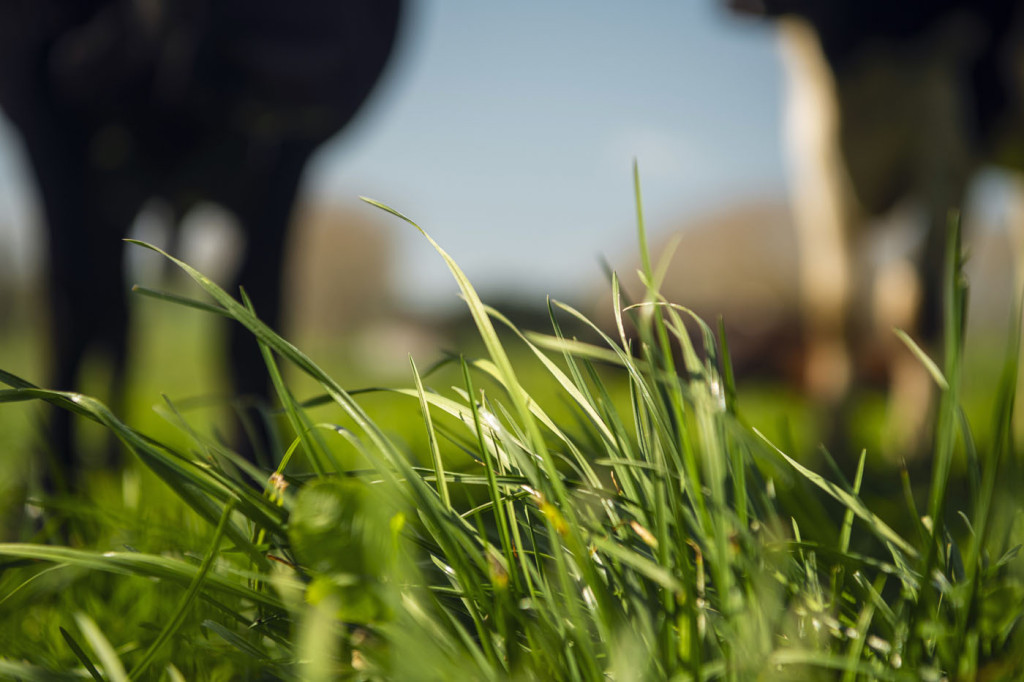The largest part of Trevor’s career was as a farmer. Trevor was an ardent advocate for pasture farming and a pioneer of ryegrass development, who had a profound impact on plant breeding in New Zealand.
Trevor completed a Bachelor of Agricultural Science degree at Massey University in 1945. He was then assistant lecturer in Dairy Husbandry and then lecturer from 1950-1951.
Dairy farming
Trevor owned two dairy farms known as ‘Ihumatao farms’.
The herd achieved high milk production and, because the farms were efficiently managed, they were highly regarded by scientists and advisors of the day, hosting regular farmer field days.
Mangere ryegrass ecotype
While lecturing at Massey College, Trevor developed his interest in plant improvement.
In 1951 he sowed the Government-bred and certified pasture seed mix, Ruanui, Grasslands Manawa, Huia Pawera in three paddocks in successive years, and on each occasion the perennial ryegrass had disappeared after one year.
Disappointed, Trevor decided to harvest his own ryegrass seed from his best paddock to sow in his worst to try and improve its performance. Obtaining seed was difficult, however he had a tenacity to succeed.
Visual comparisons between the Government-bred certified perennial ryegrass and pasture sown with the seed Trevor harvested called ‘Mangere’ ryegrass, showed it had much better growth and persistence than the recommended mixture.
At this stage, nothing was known about the important role of ryegrass endophyte, a fungus that lives inside ryegrass and is essential for insect control and ryegrass persistence in the upper North Island. The endophyte story was about to unfold.

Involvement in New Zealand’s ryegrass improvement
Trevor mentioned his concerns to the director of DSIR Grasslands, which led to the DSIR sowing out a perennial ryegrass spaced-plant nursery of their best breeding lines on Trevor’s farm. When they departed, Trevor also sowed out seeds from his best pasture adjacent to the nursery.
When the summer came, most of the DSIR plants disappeared as they did not have endophyte protection. The seed Trevor sowed was freshly harvested and thus was (inadvertently) high in endophyte.
The DSIR took plants from Trevor’s farm in 1962 that were selected, crossed and trialled and eventually released as ‘Grasslands Nui’ perennial ryegrass in 1973. Unfortunately, during the breeding process and storage of the stock seed under ambient conditions, endophyte viability was lost.
When Trevor, together with MAF, sowed some early release seed of the new Grasslands Nui ryegrass, it was badly affected by insect damage, and again did not persist. Trevor felt other farmers would benefit from sowing his Mangere ryegrass and sought assistance to make this happen.
In 1972, Trevor contacted Arthur Yates & Co Ltd, a horticultural seed producer and marketer. Yates were looking to expand and agreed to develop and market Mangere ryegrass. With the introduction of Plant Variety rights in New Zealand, Mangere ryegrass was the first proprietary ryegrass to be marketed.
Arthur Yates staff harvested seed from Trevor’s best paddock, heavily rogued it for off-types and goose grass, and multiplied it for sale in the mid-1970s, originally as Mangere perennial ryegrass and subsequently certified as ‘Ellett’ ryegrass in the 1980s. Inadvertently, as they sowed and sold fresh seed, endophyte viability was maintained at a high level.
Yates having the rights to market the Mangere ryegrass ecotype, agreed to pay royalties, based on seed sales, into a charitable agricultural research trust fund.
Ellett, Grasslands Nui and Yatsyn 1 ryegrasses dominated the seeds market in the 1980s and 1990s. Up until 2006, about 20 ryegrasses have been marketed that contain at least 25% of their genetics from Trevor’s Mangere farm.
Trevor’s recognition of the Mangere ecotype and the eventual involvement of a commercial seed company in the development and marketing of perennial ryegrass, strongly influenced the New Zealand seeds industry and ryegrass breeding, precipitating further research regarding the role of the ryegrass endophyte.
Ryegrass endophyte
The significant difference in performance between Ellett and Grasslands Nui ryegrasses led to the discovery by entomologists at MAF Ruakura and Arthur Yates of the link between endophyte presence and insect control. A wide range of endophyte research followed.
The T.R. Ellett Agricultural Research Trust
Trevor was a passionate supporter of the advancement of grassland agriculture in New Zealand. He saw an opportunity to make a financial contribution by seeking a royalty (based on seed sales) to be paid into a charitable agricultural research trust fund by commercial seeds companies using the Mangere ecotype. The Trust fund was formed in 1979 and was renamed The T.R. Ellett Agricultural Research Trust in 1996. The trust deed states the purpose to be “to further education, study, investigation and research for the benefit of the agricultural industry in New Zealand.”
Since the Trust’s establishment, it has financed more than 50 projects with a range of values. Trevor was particularly keen to help promising students completing Masters and PhD degrees on pasture-based topics.
The Trust will continue its activities as a legacy to Trevor’s philanthropy towards the agricultural industry that he actively promoted, especially relating to pasture and its pivotal role in farm systems.

